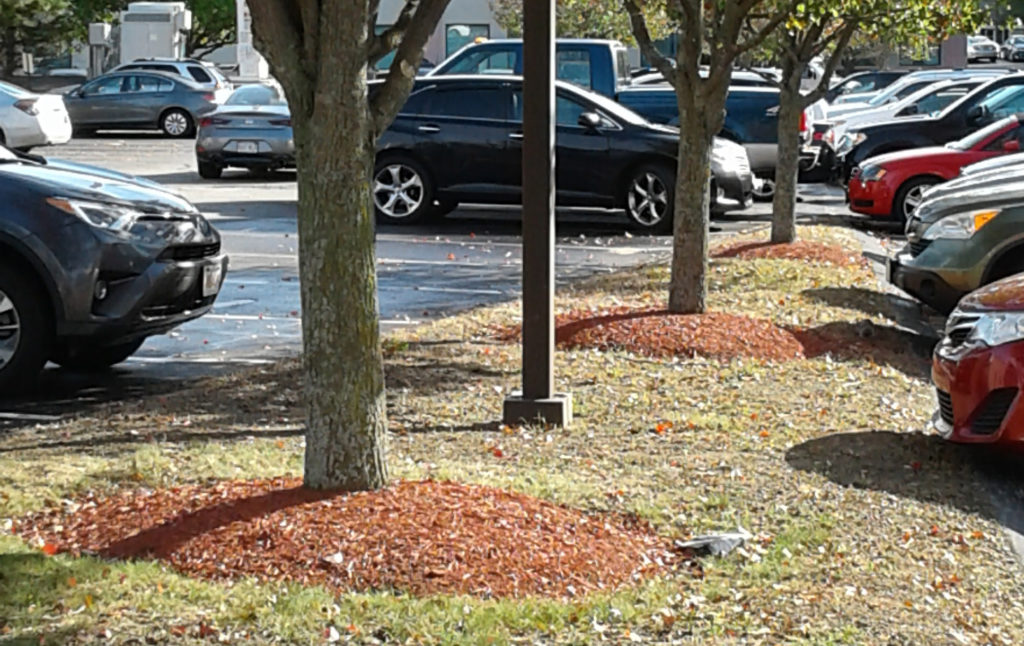
By Ruth Seward
When out in the community, caring for trees, the staff of Worcester Tree Initiative, see many trees that have been over-mulched. Mulching is a great gardening technique with a variety of benefits for the tree. However, too much mulch, especially the far too common ‘mulch volcano’, will slowly kill your tree. Over time it suffocates the roots and weakens the bark at the base of a tree. Excessive mulch can also prevent water from penetrating the soil, thereby blocking water from getting to the tree. Stresses caused by weakened bark and struggling roots can lead to tree pests and pathogens which, if left unchecked, will eventually kill the trees. You need about an inch of mulch within the first 12 inches surrounding the tree and about 2-3 inches of mulch in a ring 2-3 feet past that. Never should you allow mulch to contact the bark of the tree, since over time this will weaken the bark.
The benefits of mulching are plentiful. Mulch decreases the evaporation of water from the soils which helps to retain moisture around the tree base in the summer. Mulch regulates soil temperatures in summer and winter. By having a ring of mulch around the base of a tree, you prevent foot traffic and lawn mowers and weed whackers from coming close to the tree. This helps to reduce soil compaction around the tree as well as damage to the tree bark around the base of the tree. If using natural bark mulch, it will add nutrients to the soil as it decomposes, again, benefiting your tree. Using dyed mulch material can also be detrimental to your tree. Keep your tree healthy and don’t over mulch!
Proper mulching techniques are illustrated on the Arbor Day Foundation website: https://www.arborday.org/trees/tips/ . A paper on choosing the correct type of mulch for your plant can be found at Cornell University extension: http://chemung.cce.cornell.edu/resources/mulch-in-the-landscape. UMASS Extension spells out the benefits of mulching fruit trees in this paper: https://ag.umass.edu/sites/ag.umass.edu/files/fact-sheets/pdf/mulching_fruit.pdf.
